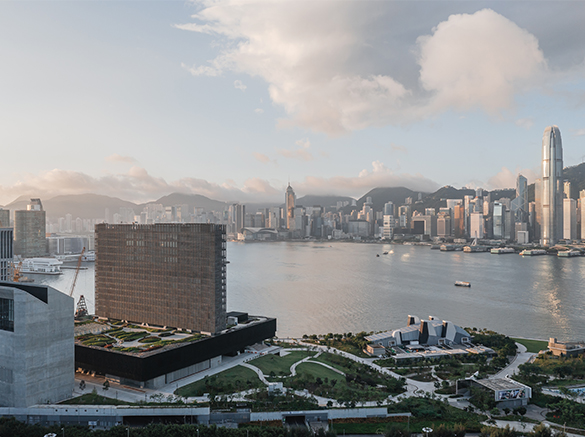ⓒLok Cheng
On the 11th of November, 2021, the international contemporary visual art museum M+ opened in Hong Kong. It took fifteen years for this project to be realised since the establishment of museum was confirmed in 2006. What does this contemporary museum look like, a project in which numerous parties have engaged over many years? And what topography of display will be drawn in the future? Let’s consider the processes behind establishing an art museum as an institution and building a distinctive physical space through two interviews with Doryun Chong (deputy director, M+) and Wim Walschap (partner, Herzog & de Meuron).
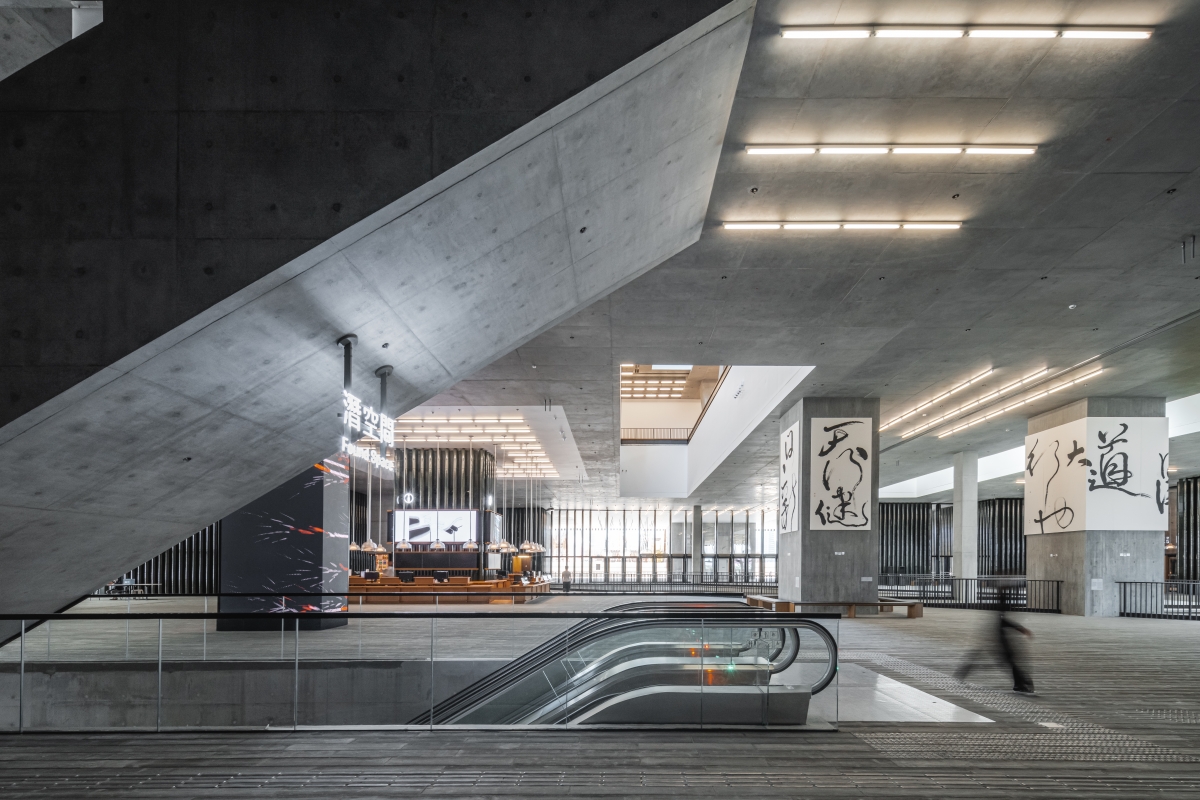
The Main Hall ⓒKevin Mak
① The Operation and Direction of M+: More than Museum
interview Doryun Chong deputy director × Choi Eunhwa
Choi Eunwha (Choi): M+ is the first global museum in Asia to address ‘contemporary visual culture’. What is the role and identity of M+ as a museum?
Doryun Chong (Chong): Contemporary visual culture can be understood simply by dividing it into two eras: the ‘contemporary’ period usually refers to a span of time of about 70 years, which ranges from the postwar period to the present. On many occasions, the year 1945, when the war ended, is treated as the starting point. But M+ pays special attention to the year 1949, as it is the year the People’s Republic of China was established. Comprehensively speaking, ‘visual culture’ is all that is visual around us. We wanted the museum to embrace everything from fine art, such as painting and sculpture, to popular culture, such as architecture, design, and film. In 2006, when the museum was confirmed, various experts gathered to hold an advisory meeting to consider the identity of the museum. Different proposals were discussed, such as the Design Museum, the Popular Culture Museum, the Fine Arts Museum, and the Hong Kong Ink Wash Painting Museum. However, the decision was made to create a model that could encompass all practice the whole, rather than dealing with cultural effects individually. The tentative name ‘M+’ was given to indicate it is more than museum of the 20th century, but the tentative name became a branding schema and it was therefore christened with this as the official name.
Choi: Today, a museum that encompasses various arts is commonly referred to as a ‘contemporary museum’. How is M+ different from it?
Chong: In terms of the history of museums and curatorial history, M+ is not a brand new attempt at something that has never existed before. If you look at museums of the 20th century, there have already been attempts made to establish a mutual relationship and to interact with other fields, recognising that art cannot exist solely within the field of art. The Museum of Modern Art (MoMA) opened in 1929, and three years after its establishment, an Architecture and Design department was created. About 50 years later, the Centre Pompidou opened in 1977, and from the beginning, its structure was organised both systematically and programmatically to approach various fields in a comprehensive manner. I believe it is important to know the history in front of us and to acknowledge that we aim to be part of it, following the trajectory that preceded it.
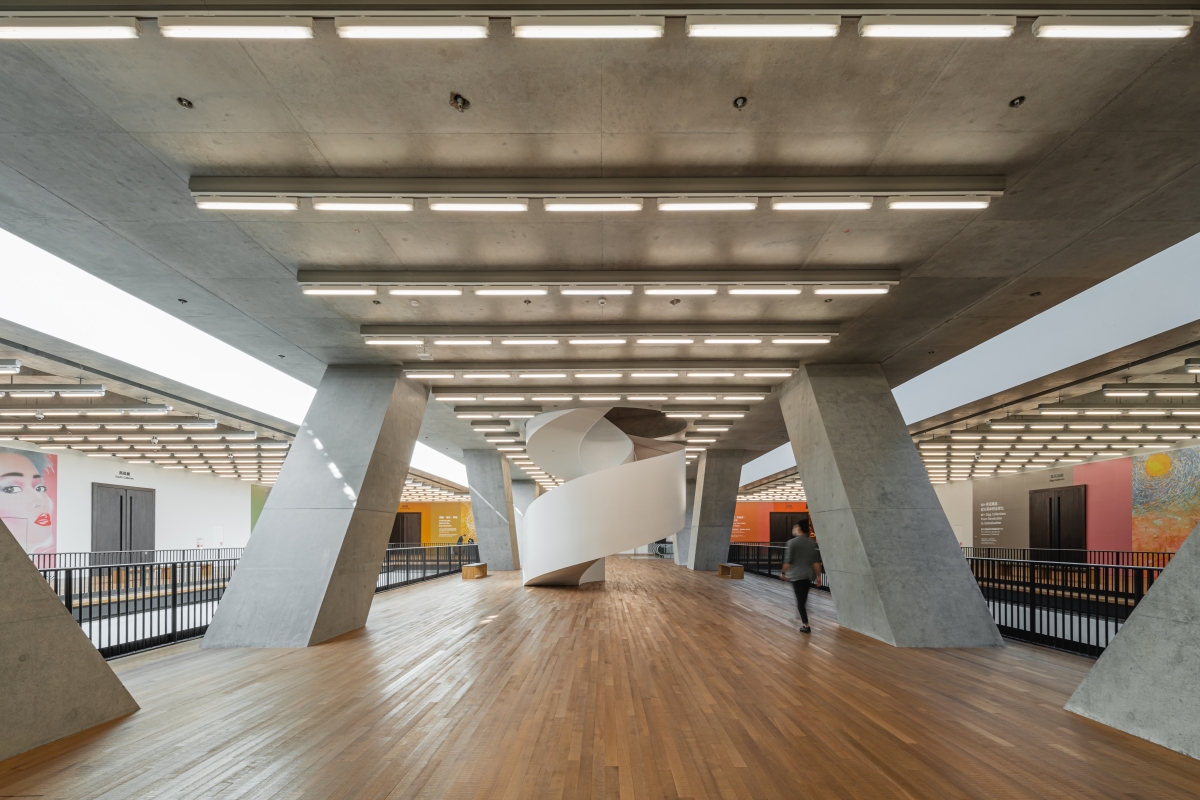
2F The Atrium ⓒKevin Mak
Choi: You were appointed as the deputy director of M+ in 2013, and it took eight years for the museum to open. During that time, what were some of the important tasks with which you were faced?
Chong: They could be roughly divided into four areas: the building, staff, collections, and programme. First, in the case of the building, the design proposal for M+ was prepared by holding a design competition. The winner was Herzog & de Meuron, and when their first design workshop was held with M+, I also started my first day there. From the curator’s point of view, when a new museum building is created, one wants the content housed by the museum to be prioritised, as opposed to architecture dominating. I was not worried about that part at all. As a studio with a lot of experience in designing museums around the world, they were very adept at minutely adjusting the scale and proportions of the exhibition space, the circulation flow of visitors and staff, and the environment, such as natural light. There were no hurdles involved in the design itself, but the construction process did not proceed smoothly. A license had to be procured, but since it was an unprecedented architecture it was difficult for the department in charge to make a decision. It took a significant amount of time to share opinions in full on what activities or programmes could take place in this building and what laws and regulations would need to follow for the license.
Choi: 17,000m2, which is 26% of the total area of the museum, is allocated to exhibition space. This consists of a total of 33 galleries. How are they used in more specific terms?
Chong: M+ is in the form of a thin vertical tower standing on a wide and low horizontal volume. The low volume is called a platform or podium, and most of the exhibition space is located here on the second floor. The podium is 110m-wide in the east-west direction and 130m-wide in the north-south direction. It is very large, almost the size of two soccer fields combined. Passing the lobby of the first floor, when you go up to the second floor, you will arrive at the centre of the rectangular podium. Oriented from this centre, the exhibition halls are divided into north, south, east, and west. Each quarter space has its own unique spatial condition. West gallery is a single space of 1600m2. As one large space, we plan to use it as a place to hold special exhibitions. North galleries are comprised of nine galleries, ranging in size from 200m2 to 800m2. Similarly, the East galleries and South galleries are comprised of spaces of different sizes and ratios. Rotational exhibitions on M+’s collections are likely to take place here. In addition to galleries, exhibitions can be held in the courtyard, main hall, and open space on the underground.
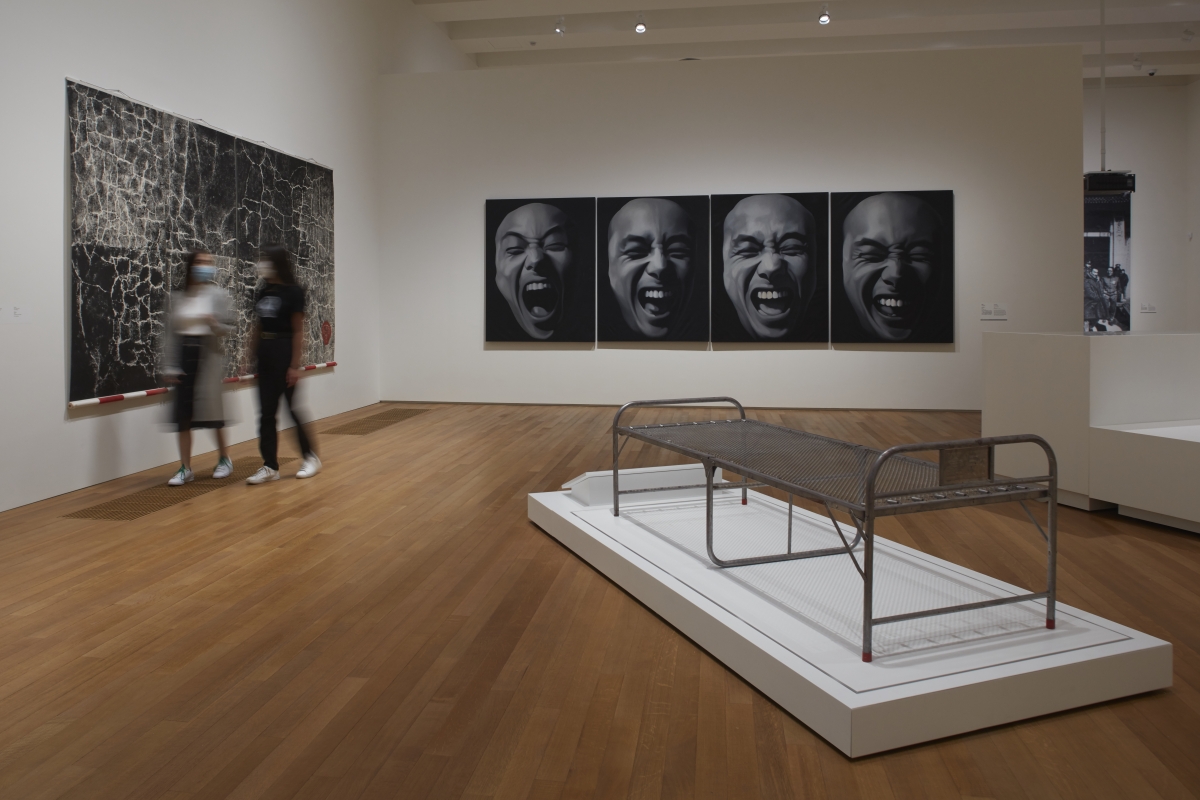
Installation view of ‘M+ Sigg Collection: From Revolution to Globalisation’ in Sigg Galleries ⓒLok Cheng
Choi: l would like to hear more about the staff. How is M+ currently organised, in terms of departments and people?
Chong: It is characterised by not being subdivided into too many departments. Isn’t it all too often the case that the larger the institution becomes, the more departments are isolated? We intended to create a more horizontal and organic structure. There are only three departments, and they are Curatorial, Collection & Exhibition, and Museum Operations. The Curatorial department is divided into three specific teams: the Learning team in charge of education, the Curatorial Affairs team in charge of researching, managing collections and exhibitions, and the Digital and Editorial Content team in charge of planning content to cover and publish, as you are undertaking right now. Of these organisations, it is a little unique that the Digital and Editorial Content team belongs to the Curatorial department, because they usually belong to the Public Relations office department or Marketing department of an institution. However, we considered that the curatorial practice itself is to create content, so we grouped them under one team. The Collection & Exhibition department is a department that supports the technology required for the operation and management of the museum and exhibitions. It is comprised of different experts including registrars who record and figure out the condition and location of works, conservators who restore works to their original state, and art handlers who are in charge of installation. Lastly, the Museum Operations department is in charge of the management and operation of the institution.
Choi: I heard that there are people of various nationalities and backgrounds. Was such diversity intended from the outset?
Chong: Yes, of course. When I first came here, there were about 20 employees in M+, but now there are about 220, which is ten times more. About 30 different nationalities comprise this workforce. Since our mission was to establish a global museum in the international city of Hong Kong, it was natural strategy that we would scout people of outstanding competence from different countries. We thought that we would be able to establish the DNA of M+ by sharing our awareness of various problems faced by each of them.
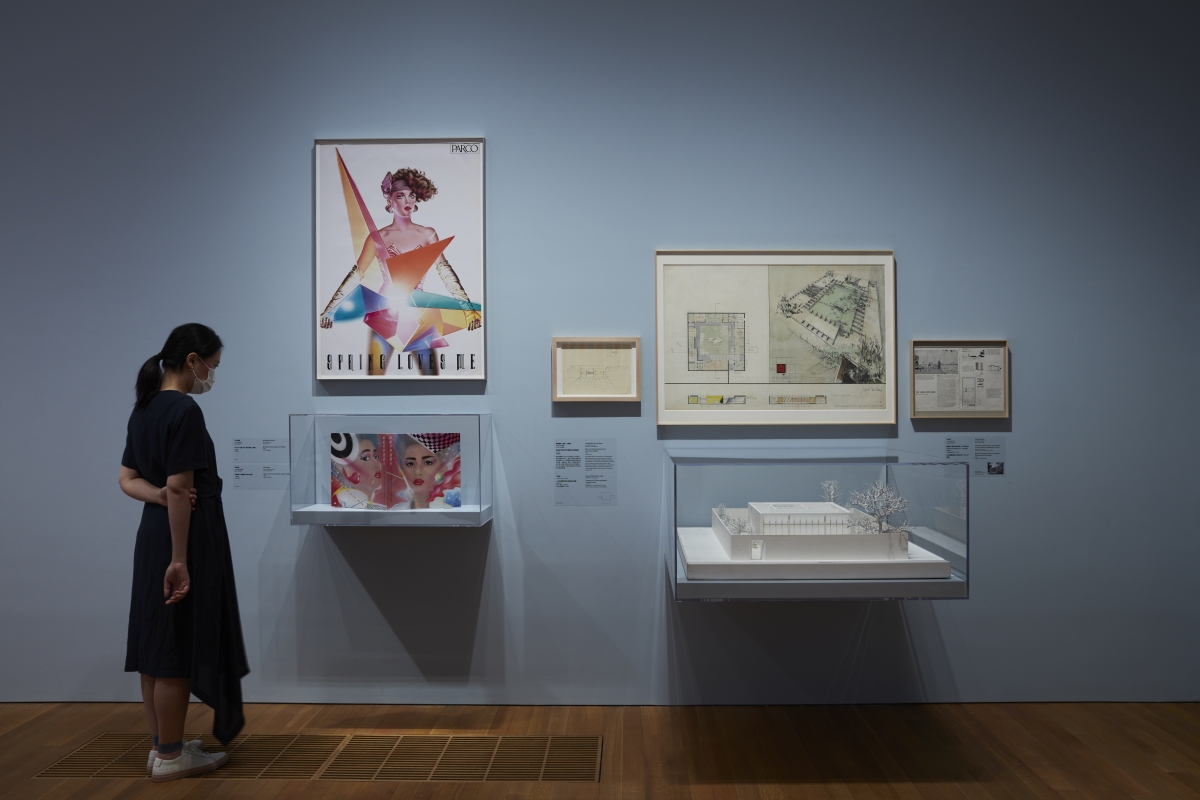
Installation view of ‘Things, Spaces, Interactions’ in East Galleries ⓒLok Cheng
Choi: I would like to hear about M+’s collections. In 2020, at the research forum ‘Re-inventing Archive: Design, Architecture, Visual Culture’ held in Korea, Yokohama Ikko (lead curator of Design and Architecture, M+) said that M+ has a collection of about 1,700 works related to design and architecture. How about now? Could you tell me about the current status and direction of the collections in M+?
Chong: There are four collections with a focus on three mediums: visual art, design and architecture, and moving image. First, the ‘M+ Sigg Collection’ consists of more than 1,500 works from the collection of Swissborn collector Uli Sigg. It consists of work by Chinese contemporary artists, such as Ai Weiwei, Fang Lijun, and Yue Minjun. The ‘M+ Collection’ includes all visual art, architecture, design, and moving image, and the ‘Collection Archives’ covers documentation in the form of photos, drawings, and correspondences related to architecture and design. Lastly, we named these different collections, including the ‘Library Special Collection’, as ‘M+ Collections’, pluralising the collection. Over the past ten years, we have been creating collections at a very fast pace, and it is still a work in progress. Works related to architectural design have also increased from what Ikko said two years ago, and now there are about 2200 ‒ 2300 works. Altogether, we own about 50,000 artworks.
Choi: How do you collect works related to architecture and design?
Chong: ‘Collection Archives’ received a lot of donations. This is because there is no market dedicated to works and items related to architecture and design. Since they have no market value, they might end up at risk of disappearing if no one takes care of them. When we as an institution say we will ‘catalogue, digitise, continue to research, and exhibit’, then the owner of the collection often willingly donates with delight. There are, of course, exceptions. M+ owns about 90% of Archigram’s 1960s and 1970s archives, and they were purchased from institutions in the U.K. Archigram began in a European context, but it has such significant meaning and influence in that its architectural ideas that have remained on paper from the mid-20th century are now finding material form in Asia, especially in China and Hong Kong. That is why we decided to collect them, and we were able to create the collection.
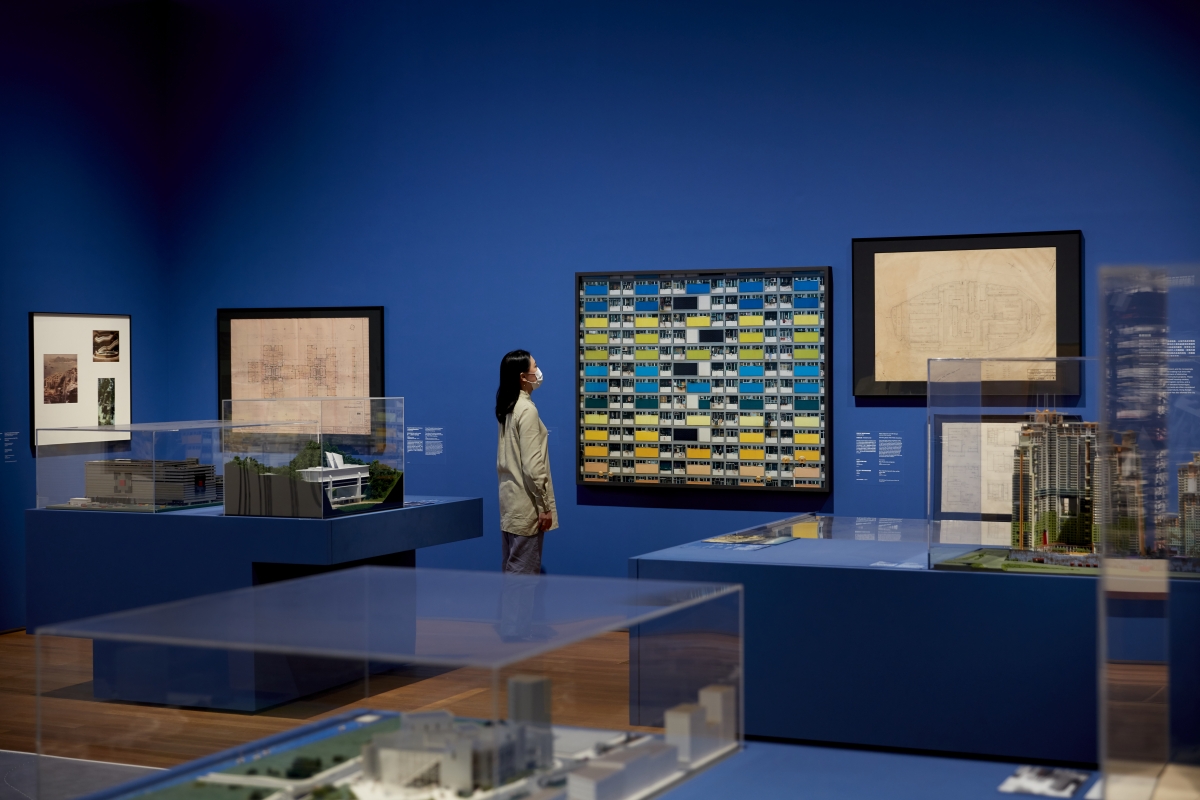
Installation view of ‘Hong Kong: Here and Beyond’ in Main Hall Gallery ⓒLok Cheng
Choi: What is the process behind collecting works? What are the values you use as your coordinates when making a decision?
Chong: The act of collecting is something that cannot be decided upon by the Curatorial department. It may be the same throughout Korea, but the decision is typically made by holding meetings with a committee comprised of experts. A number of meetings are held over the course of a year, at which time we submit proposals and get approval before proceeding with the process of collecting works. Within our department, we constantly ruminate on questions such as ‘Does this work correspond to the mission of M+’, ‘How significant is this work to the world of artists’ and architects’ works?’, and ‘In particular, in the case of work by an architect, how should it be represented?’ We discuss the selection of works as a group and submit a proposal. It holds significance for us in that this process is shared transparently within the Curatorial department. Varied as visual art, design and architecture, and moving image is, although the major medium of each work may differ, the best approach is to let everyone know the artists and themes to which different teams are paying attention.
Choi: M+ opened after a 10-year preparation period. I believe the next phase will be even more important. What are the shortterm and long-term goals of M+?
Chong: M+ opened November, 2021. Notwithstanding that it is a global museum, there are not presently many tourists visiting it due to the COVID-19 pandemic. I was often asked why it opened at such a difficult time. But there was a strong will to open it for Hong Kong citizens, since it is a public institution established by the Hong Kong government using Hong Kong taxes. Ever since it opened, about 10,000 visitors have stepped through its doors each day. Considering that Hong Kong has a population of about 7.5 million, this is a quite high figure. Lately, I could actually sense the great attention paid to this place, and yet, so far, it is difficult for the audience to know what to see or how to act upon entering this large-scale museum. This phase seems to be a kind of training period for both M+ and Hong Kong citizens. We train the local public, and at the same time, we seem to be going through the process of reflecting the local public. Looking a little further ahead, as our political and social conditions continuously changing, museums will also continue to adapt, to confirm our initial vision and mission statement, and to rethink what we can and should do as a public institution and a global museum.






